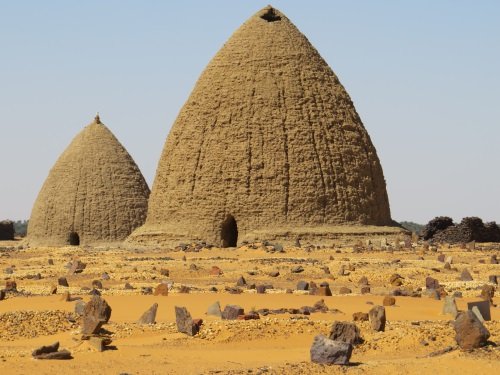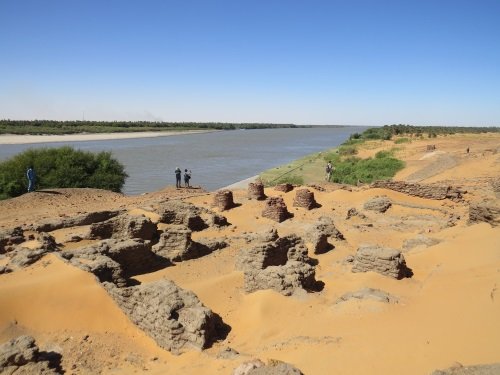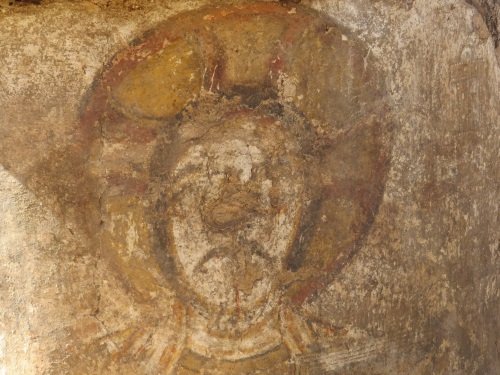The ruins of Old Dongola are located on the East Bank of the Nile. As in Egypt, the Nile provides Sudan with a narrow strip of fertile ground. This area still has a number of colourful Nubian villages, where people live of the land (beans!). However, we arrived from the desert where we had been camping.
The first remarkable sight in Old Dongola is the group of some 20 beehive tombs. These are of later date than Christian Dongola, but probably will be included in a nomination. I was pretty stunned by them, in the right sunlight they are beautiful. They are much bigger than I had expected. On the inside they are empty nowadays, except for significant numbers of bats.

|
The Christian archaeological site lies uphill. It covers quite a large area, with palace grounds, churches and houses. From the fourth to the fourteenth century Old Dongola was the capital of the Makurian state and an important trade city. We (a Dutch tour group of 16 people) were the only visitors on site and I noticed no entrance regulations. After a while a caretaker showed up and followed us around on the 45 minute circuit along the remains of the buildings.
Compared to
Paul Tanner's photos
from his visit in 2005, I found the site to be less covered with sand 9 years later. The church buildings seem to be fully excavated, but not much more is left than columns and walls. This part of the former town lies closest to the river.

|
The Throne Hall is the most impressive construction still standing. Its interior is completely sealed off nowadays. "UNESCO is working on it", according to our guide. There's no sign of any work being done however. Supposedly there's an audience room with a painted floral band and a figures Christ and a Nubian bishop inside.
Of course I was very curious about the state of the frescoes found at the Monastery of the Holy Trinity. The Polish archaeologists are still working on the site, but not today and it did not look like they've been present a lot recently. Earlier this year the protective covering above the monastery had collapsed due to heavy rains. It hasn't been repaired since. Fortunately we were able to see the frescoes and photograph them. They are in a Byzantine style and having their original colouring, but they are very hard to see. Most of them are damaged too.

|
This was the first archaelogical site that I visited in Sudan, and I enjoyed it. It might not be spectacular enough to be in a Top 100 or even Top 500 of WHS, but while we are still adding sites from all over the world this one could surely make the cut. It is a testimony to a long and important phase in Nubian history. And I really loved those beehive tombs!